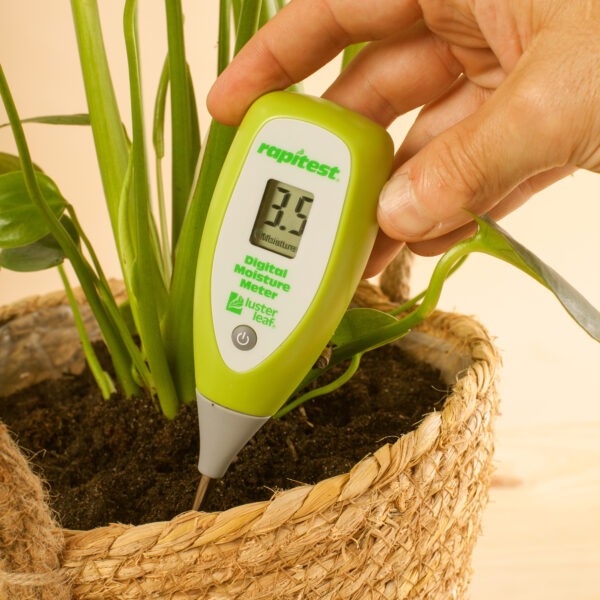The Scientific Research Behind Moisture Meters: Just How They Work and Why They're Necessary
The Scientific Research Behind Moisture Meters: Just How They Work and Why They're Necessary
Blog Article
Explore the Globe of Moisture Meters: Whatever You Required to Know
In the world of moisture meters exists a world of accuracy and functionality that commonly goes undetected. Understanding exactly how moisture meters run, the different types readily available, and their varied uses can shed light on their relevance in ensuring top quality and efficiency.
Exactly How Moisture Meters Work
Moisture meters operate by determining the electric conductivity or capacitance of materials to identify the wetness web content present. These meters are indispensable tools throughout various markets, consisting of building and construction, woodworking, and agriculture. By making use of different approaches such as pinless or pin-type innovation, moisture meters provide precise readings that help professionals make informed decisions.
Pin-type moisture meters work by putting the sharp pins right into the material being examined. On the other hand, pinless dampness meters use electro-magnetic signals to scan a bigger area without creating any type of damages to the product's surface area.
No matter the approach used, moisture meters play a vital function in stopping problems such as mold development, structural damages, or item issues created by excess wetness. Comprehending just how these meters job is important for making certain the top quality and honesty of materials in different applications.
Types of Moisture Meters
Offered the crucial function wetness meters play in various markets, it is necessary to recognize the various types available to experts for properly analyzing moisture levels - Moisture Meter. There are mostly two main types of moisture meters: pin-type and pinless moisture meters

On the other hand, pinless dampness meters utilize electromagnetic sensing unit plates to scan a bigger location of the material without creating any damage. This type is ideal for rapidly scanning big areas and is generally utilized for floor covering, walls, and ceilings. Pinless meters are hassle-free for taking readings on completed surface areas without leaving any kind of noticeable marks.
Both kinds of dampness meters have their benefits and are chosen based upon the specific requirements of the work available. Comprehending the distinctions in between these kinds is vital for specialists to make accurate wetness assessments.
Applications Across Industries
Building and construction experts depend on wetness meters to examine the wetness degrees in structure products like drywall, concrete, and timber, which is critical for preserving structural honesty and protecting against problems like rot or mold. The flooring market makes use of dampness meters to measure the moisture content in subfloors prior to installing various floor treatments, stopping pricey damages due to excess dampness. In the food sector, dampness meters are used to monitor and regulate moisture degrees in products such as grains, nuts, and dried out fruits to maintain quality and quality.
Tips for Utilizing Dampness Meters
Utilize the moisture meter's calibration settings to make certain accurate readings when determining the dampness web content in various materials. In addition, make certain the meter is set to the correct moisture array for the product you are determining to obtain the most specific results.
When using a pin-type dampness meter, put the pins to the ideal deepness recommended for the product being tested. This makes sure that the wetness analyses are extracted from the right deepness within the product, offering an extra accurate representation of its wetness content. For pinless moisture meters, keep in mind to preserve proper contact with the product's surface area to get trusted readings.
Regularly examine and replace the batteries in your wetness meter to protect against incorrect analyses because of reduced power. When not in usage to lengthen its lifespan and maintain its accuracy, Shop the meter in a risk-free index and dry location. By following visit this site right here these pointers, you can make the most of the efficiency of your dampness meter and acquire specific wetness web content measurements across various materials.
Upkeep and Calibration
To ensure the precision of moisture content measurements, normal maintenance and calibration of the moisture meter are essential actions in its proper performance. Calibration readjusts the dampness meter to make sure that it offers consistent and trustworthy outcomes.
Calibration must be done periodically, particularly if the dampness meter is used frequently or in important applications where accurate dimensions are called for. Many moisture meters come with calibration devices or can be adjusted by professional solutions. Moisture Meter. It is suggested to maintain a log of calibration dates and results to track the performance of the dampness meter with time. By keeping and adjusting the moisture meter routinely, customers can trust the precision of the wetness web content measurements gotten.
Conclusion

In verdict, moisture meters play an important function in various markets by precisely determining the moisture material of materials. Comprehending just how these tools function, the various types readily available, and appropriate upkeep and calibration are important for getting reputable outcomes. Whether in building and construction, production, or agriculture, using moisture meters assists make sure quality assurance and efficiency in processes.

In verdict, dampness meters play an essential role in various sectors by precisely gauging the dampness material of products.
Report this page